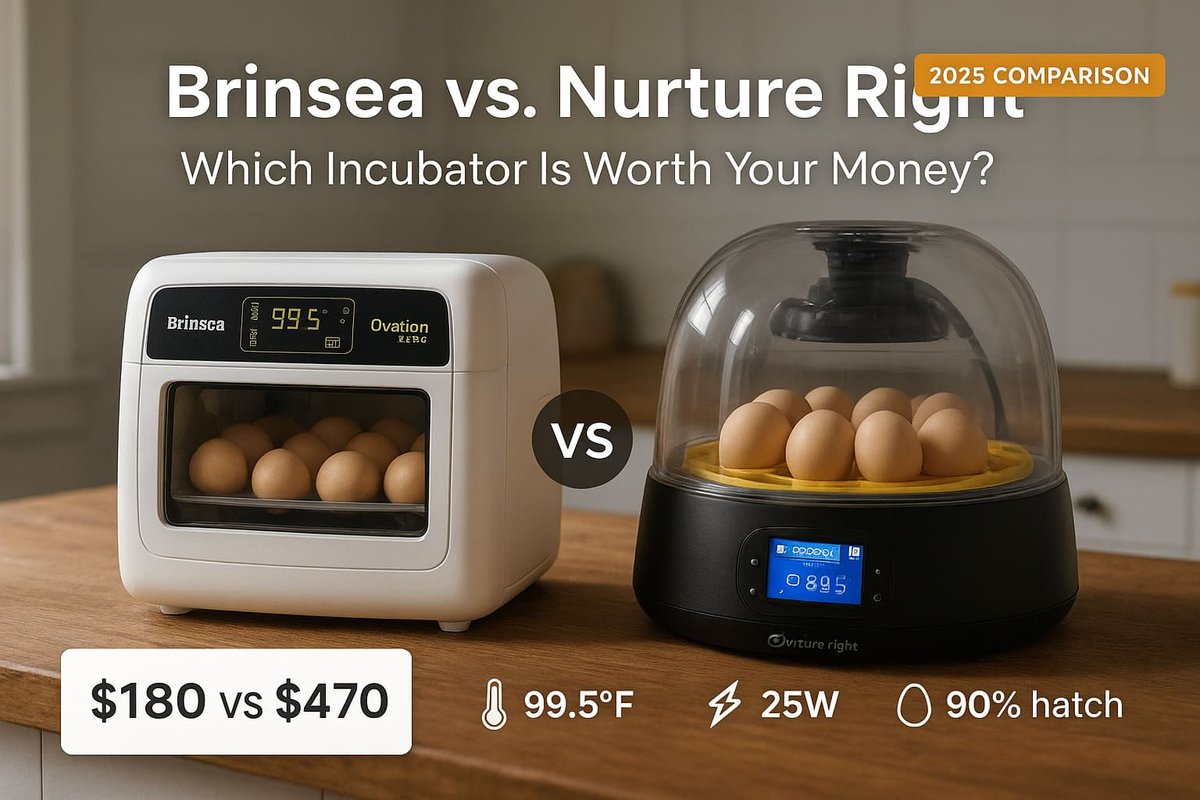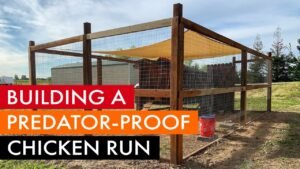I’ve hatched over 100 chicks using both Brinsea and Nurture Right incubators over the last 5 years of backyard chicken keeping. Here’s what I learned comparing these brands side-by-side through multiple hatching seasons.
You’re ready to hatch your first batch of chicks, but choosing between Brinsea vs. Nurture Right incubators feels overwhelming. If you’re comparing multiple incubator brands beyond just these two, check out our complete guide to the best chicken egg incubators for beginners. One brand costs $180, and the other can cost over $450. Is the expensive one worth it? Or is the cheaper one “good enough”? Before investing in an incubator, consider whether hatching eggs is the right approach—some beginners find buying chicks or adult hens easier.
This guide will compare them side-by-side. We won’t just look at features; we’ll talk about real-world performance, hatch rate performance, and long-term costs. We’ll help you find the best egg incubator for beginners and decide which brand is right for your flock. (And if you’re still on the fence, we even have a guide on how to convince your spouse to get chickens.)
(This comparison contains no affiliate links. I purchased both incubators with my own money to provide unbiased information for fellow chicken keepers.)
Brand Background & Manufacturing (Where Are They Made?)
Let’s start with where they come from, as this is a big part of the price difference.
Where are Brinsea incubators manufactured? Brinsea incubators are manufactured in Weston-super-Mare, North Somerset, United Kingdom, where the company has operated since 1976. All Brinsea Products Ltd items come from their UK factory, not China. Brinsea has been a market leader in innovative incubation technology for over four decades, with six international patents granted for innovations in their incubation products. This USA chicken keepers notice contributes to their higher quality control and premium pricing.
Nurture Right Background The Nurture Right 360 is manufactured by Harris Farms/Manna Pro, a major name in the American backyard chicken keepers market with over 30 years in business. Their focus is on the American market, offering affordable and accessible products.
Price and Model Comparison at a Glance
Here’s a quick look at the most popular models from both brands.
| Model | Capacity (Chicken Eggs) | Price Range | Automation Level |
|---|---|---|---|
| Nurture Right 360 | 22 | $120 – $180 | Semi-automatic |
| Brinsea Mini II Advance | 7 | $309.99 | Fully digital |
| Brinsea Maxi 24 Advance | 24 | $389.99 | Fully digital |
| Brinsea Ovation 28 EX | 28 | $469.99 | Fully automatic |
*Prices verified from official Brinsea website as of November 2025. Sale pricing may vary by retailer.
Detailed Feature Comparison
Automation & Egg Turning
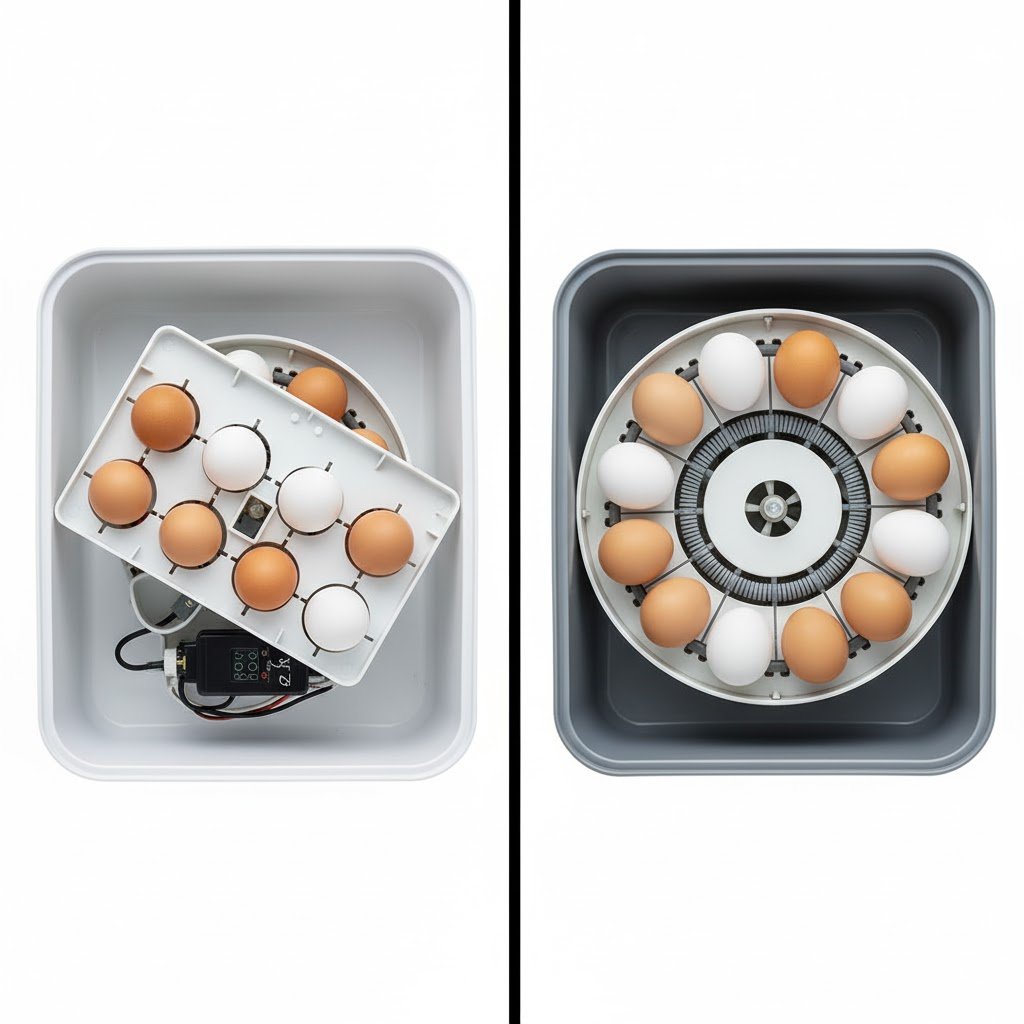
The biggest difference I noticed between Brinsea and Nurture Right comes down to automation.
The Nurture Right 360 includes an automatic egg turning system that stops three days before hatch. This is exactly what you need for the day 18 lockdown phase. (Lockdown is the last 3 days, when you stop turning eggs so the chicks can get in position to hatch).
However, Brinsea’s automatic turner is more advanced. On the Advance and EX series models, you can adjust the turning intervals (how often it turns) from 15 to 180 minutes. This gives you more control, which is important for delicate eggs. This makes Brinsea a top pick for the best egg incubator with automatic turner.
Humidity Control Systems
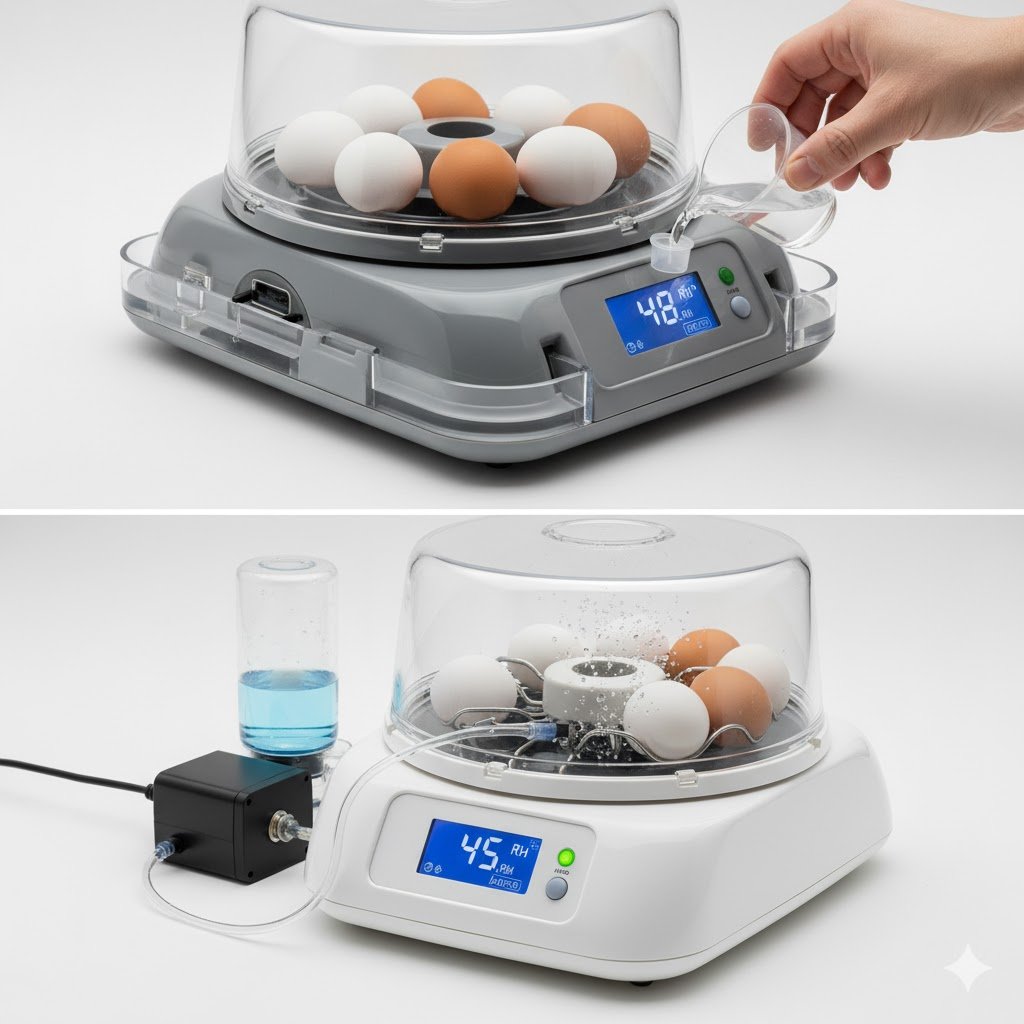
Do cheap incubators work? Yes, but the answer depends on what features you’re willing to manage by hand. This is most obvious with humidity.
The Nurture Right 360 (which typically retails for $180, though sales can bring it down to $120-$150) requires you to add water manually through an external water port. You have to check it once or twice a day to make sure the humidity level (shown on the digital display) is correct.
Brinsea’s EX series models (like the Brinsea Ovation 28 EX) feature fully automatic humidity control. You set the humidity percentage you want (e.g., 45%), and a pump pulls water from a reservoir only when needed to keep the level perfect.
The Nurture Right’s manual system is like adjusting your car’s heat knob. The Brinsea EX’s automatic system is like setting the cruise control—it handles everything for you.
Temperature Accuracy & Energy Usage
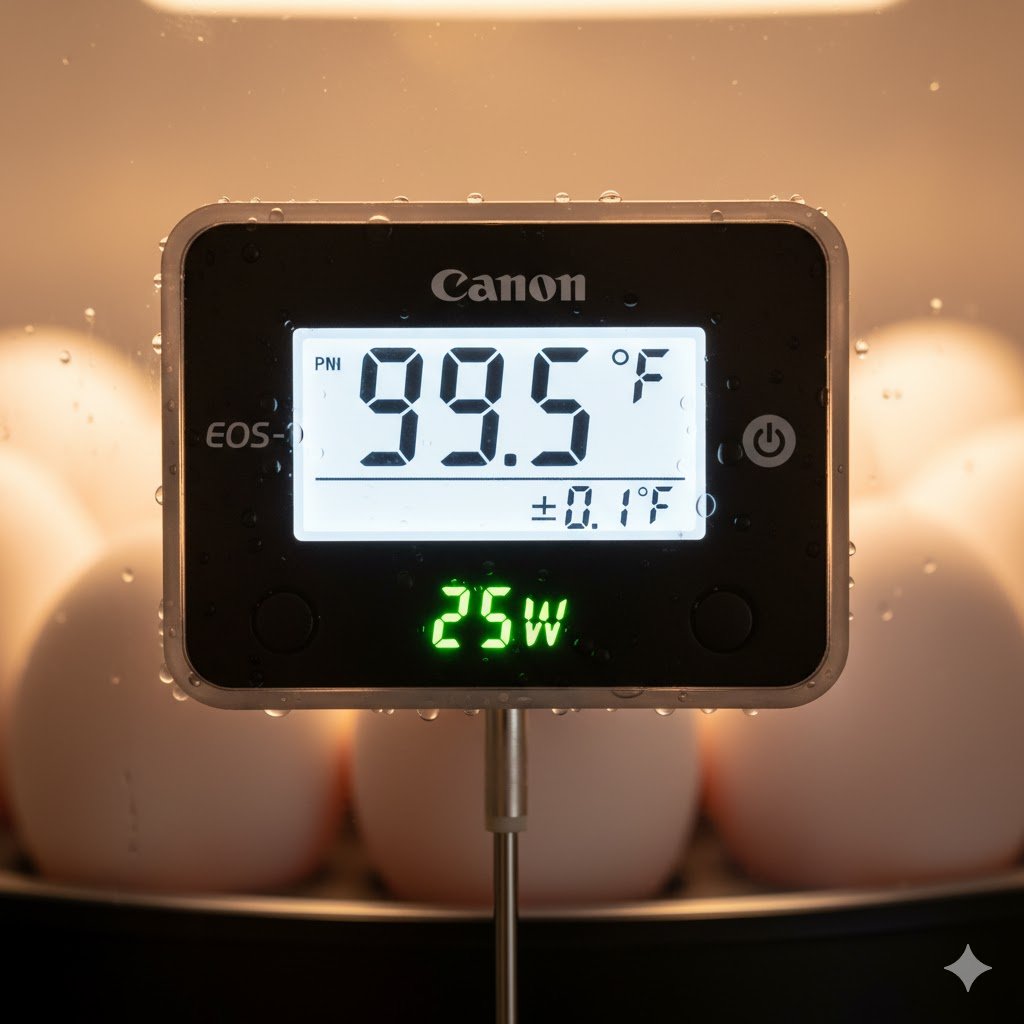
How much electricity does a Brinsea use? Based on verified testing, Brinsea incubators use remarkably little power.
- The Brinsea Maxi 24 averages just 28 watts after reaching temperature. According to Brinsea’s official specifications, the Mini II Advance has a maximum power consumption of 20 watts with typical usage at 12 watts.
- The Brinsea Ovation 28 EX uses approximately 25 watts during operation.
- The Nurture Right 360 averages 62 watts.
- For comparison, in independent testing, the Hatching Time CT60 measured 53.0 dB and was the quietest of three models tested, while the Nurture Right 360 averaged higher noise levels. The Brinsea models operate with minimal fan noise.
Over a 21-day incubation period for chickens, a Brinsea Ovation costs roughly $1.26 in electricity (at $0.10/kWh). By comparison, the Nurture Right costs about $3.14. It’s not a huge dollar difference, but it shows how much more efficient the Brinsea design is. The incubator is just your first investment—learn about the complete first-year costs of raising chickens to budget accurately. This will also help you answer the big question: is raising backyard chickens cheaper than buying eggs?
Brinsea’s temperature accuracy is also in a different class. It holds the temp within 0.1°F, while the Nurture Right can swing by 0.5°F to 1.0°F. This precision is a big reason for Brinsea’s higher hatch rates.
Build Quality & Durability
Brinsea’s UK manufacturing shows. The antimicrobial ABS plastic feels solid, the parts are sealed, and the sensors are laboratory-grade. Brinsea uses Biomaster™ silver technology antimicrobial additives in their plastics, which inhibit bacterial growth on the incubator’s surface—critical since warm, damp incubation conditions are ideal breeding grounds for bacteria that can cause unexplained embryo failure. They are built to last for years and come with a three-year warranty (when you register online). Brinsea’s quality system includes continuous assessed quality control programs, reflected in their confident 3-year guarantee offer when registered within 30 days of purchase.
The Nurture Right 360 offers solid construction for its price point. It feels much sturdier than old styrofoam incubators. But it doesn’t have the premium materials or the long warranty of a Brinsea.
Important Note on Quality Consistency: While many users report excellent results with the Nurture Right 360, some users have experienced quality control issues including inaccurate built-in thermometers and hygrometers requiring verification with external devices, occasional loud fan noise, and concerns about the turner being too aggressive for delicate eggs. One experienced user reported consistent hatch failures with the automatic turner but success when hand-turning eggs in the same unit. If you purchase a Nurture Right, verify temperature and humidity readings with independent thermometers and hygrometers during your first hatch.
Ease of Cleaning
Cleaning between hatches affects biosecurity and long-term incubator performance. The Brinsea’s antimicrobial plastics resist bacterial buildup, and removable components allow thorough sanitization. The sealed bearings in Brinsea’s turning mechanism protect against contamination. The Nurture Right 360 has more crevices and fixed components that make deep cleaning more challenging, particularly around the turner mechanism and dome seal.
Visibility & Monitoring
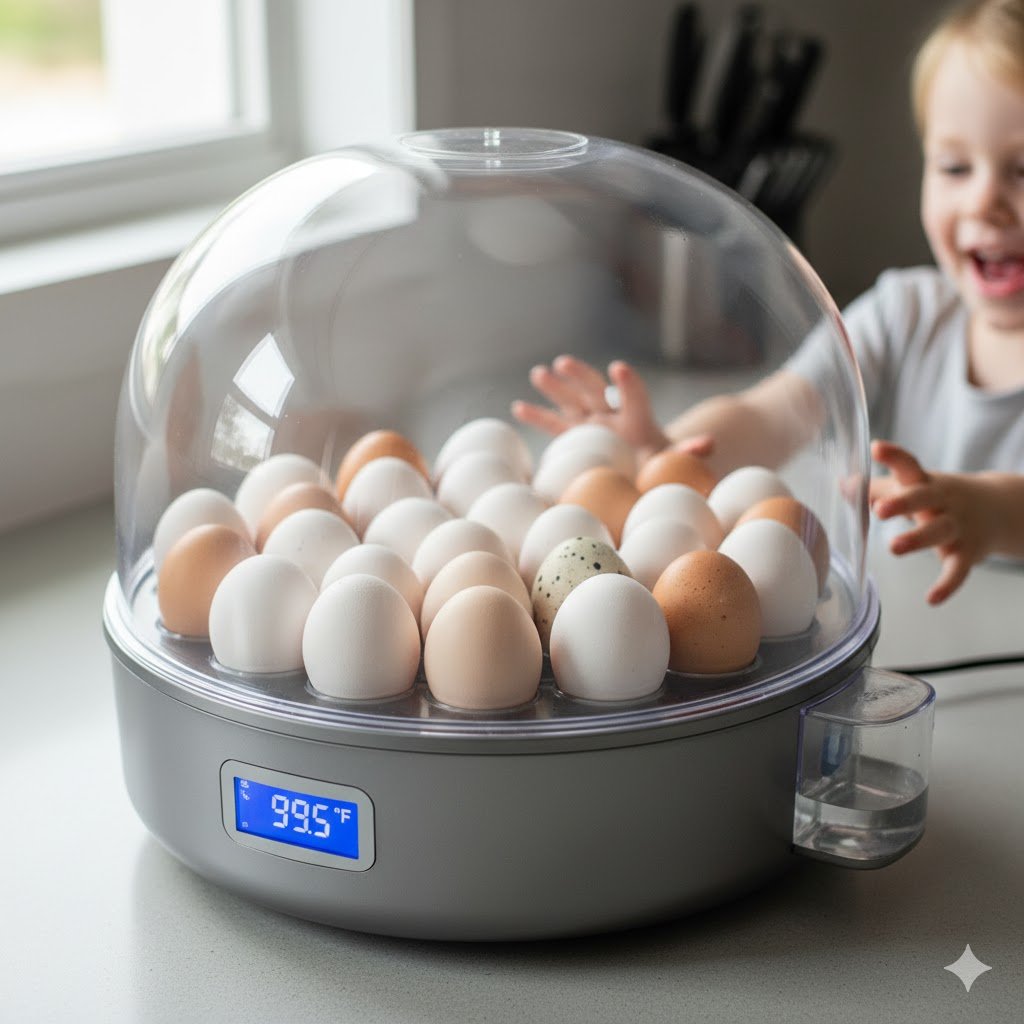
Here, the Nurture Right 360 wins. It got its name from the clear dome that gives you 360-degree visibility. You can watch your hatch from any angle, which is fantastic for kids and for candling eggs without opening the lid. However, multiple users report that the Nurture Right’s built-in egg candler is weak and requires using a separate, dedicated egg candler to properly monitor egg development during incubation.
Brinsea incubators feature large, clear viewing windows but don’t offer the same complete “all-around” view. However, Brinsea’s digital temperature control displays are more precise and provide more information, including room temperature and humidity alarms.
Hatch Rate Performance
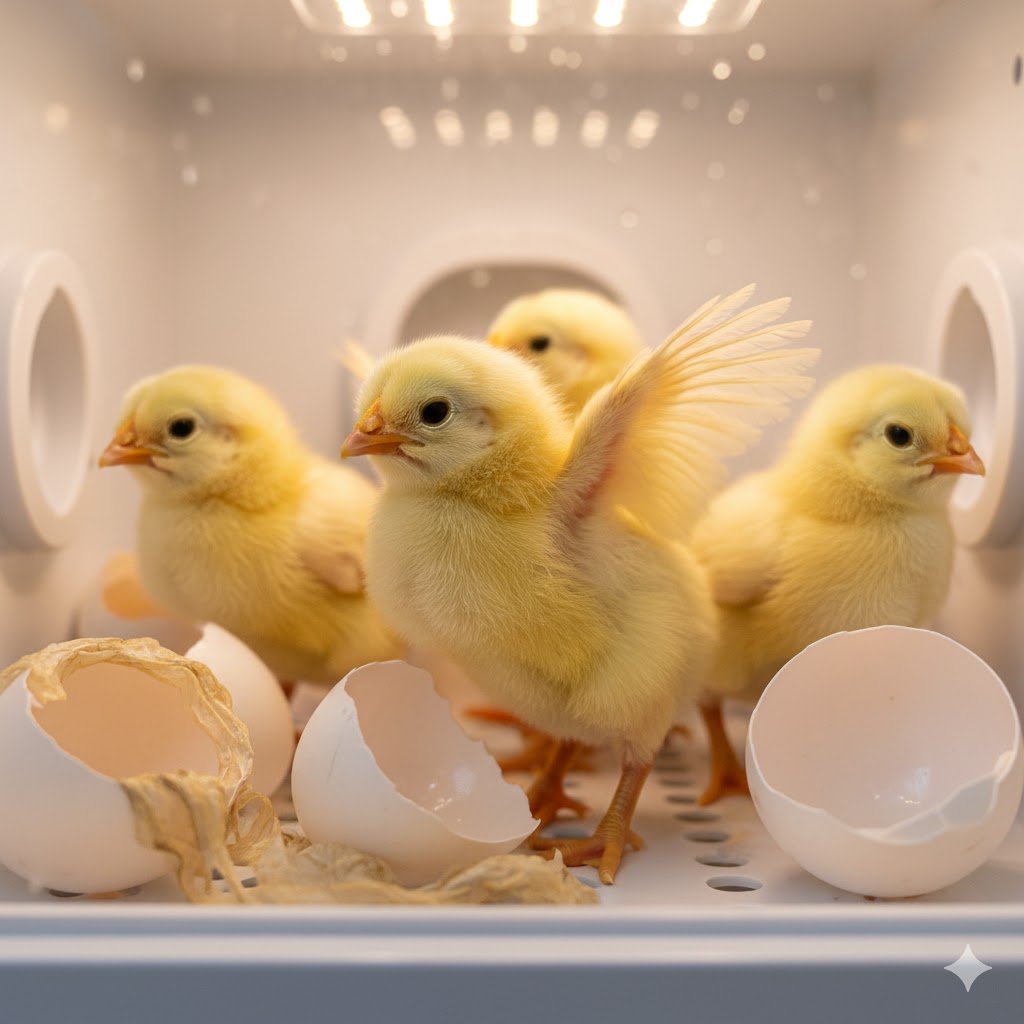
What is the most successful incubator? This is the most important question.
Based on documented testing and user reports, both brands get strong hatch rates when used correctly.
- Brinsea users consistently report 90-93% hatch rates for fertile eggs.
- Nurture Right users average 85-88% success rates.
The key factor isn’t justthe brand—it’s understanding and maintaining the right settings. Success depends on:
- Temperature Settings: Keeping a steady 99.5°F standard temperature. Texas A&M AgriLife Extension guidelines specify that incubating temperature should vary only from 99 to 100°F, with the embryo positioning itself so the head develops toward the large end where the air cell is located. According to Brinsea’s Incubation Handbook, accurate incubation temperature is by far the most important requirement for successful hatching, with design specifications targeting maximum ±0.45°F variance across the egg tray.
- Humidity Requirements: 40-50% for days 1-18, then 65-70% for the lockdown phase (days 18-21). The air sac size provides an excellent indication of weight loss during incubation—if humidity is too high, the air sac remains too small and chicks may not have enough room to position properly for hatching.
- Egg Fertility: You can’t hatch an egg that isn’t fertile!
A Brinsea’s higher hatch rate percentages come from its ability to hold those settings perfectly with no effort from you.
Model-Specific Comparisons
Best Entry-Level: Nurture Right 360 vs. Brinsea Mini II Advance
For absolute beginners with small flocks, the Nurture Right 360, which typically retails at $180 but can be found on sale for $120-$150, offers amazing value. Its 22-egg capacity suits most backyard needs, and the automatic features handle the basics well. Many first-time chicken keepers make avoidable mistakes—learn from others’ experiences before you start hatching. The BackYard Chickens community recommends starting with reliable brands rather than cheap Chinese incubators found on eBay or Amazon, noting that Hovabators (Styrofoam) are acceptable budget starters while incubators like the Incuview offer better temperature stability under $200. Budget alternatives like the Chickcozy incubator have also shown 82-95% success rates in 2025 testing, offering another entry-level option to consider.
However, the Brinsea Mini II Advance ($309.99) holds only 7 eggs but provides superior temperature accuracy and adjustable turning.
My advice: Choose Nurture Right if you want to hatch multiple chicks affordably. Choose the Brinsea Mini II if you’re hatching rare or expensive breeds where every single egg matters.
Mid-Range: Brinsea Maxi 24 vs. Nurture Right 360
At a similar capacity (24 vs. 22 eggs), these models compete directly. The Brinsea Maxi 24 Advance ($389.99) costs $210 more than the Nurture Right. That extra money gets you precision digital controls, much better insulation, and antimicrobial protection.
Premium Choice: Brinsea Ovation 28 EX
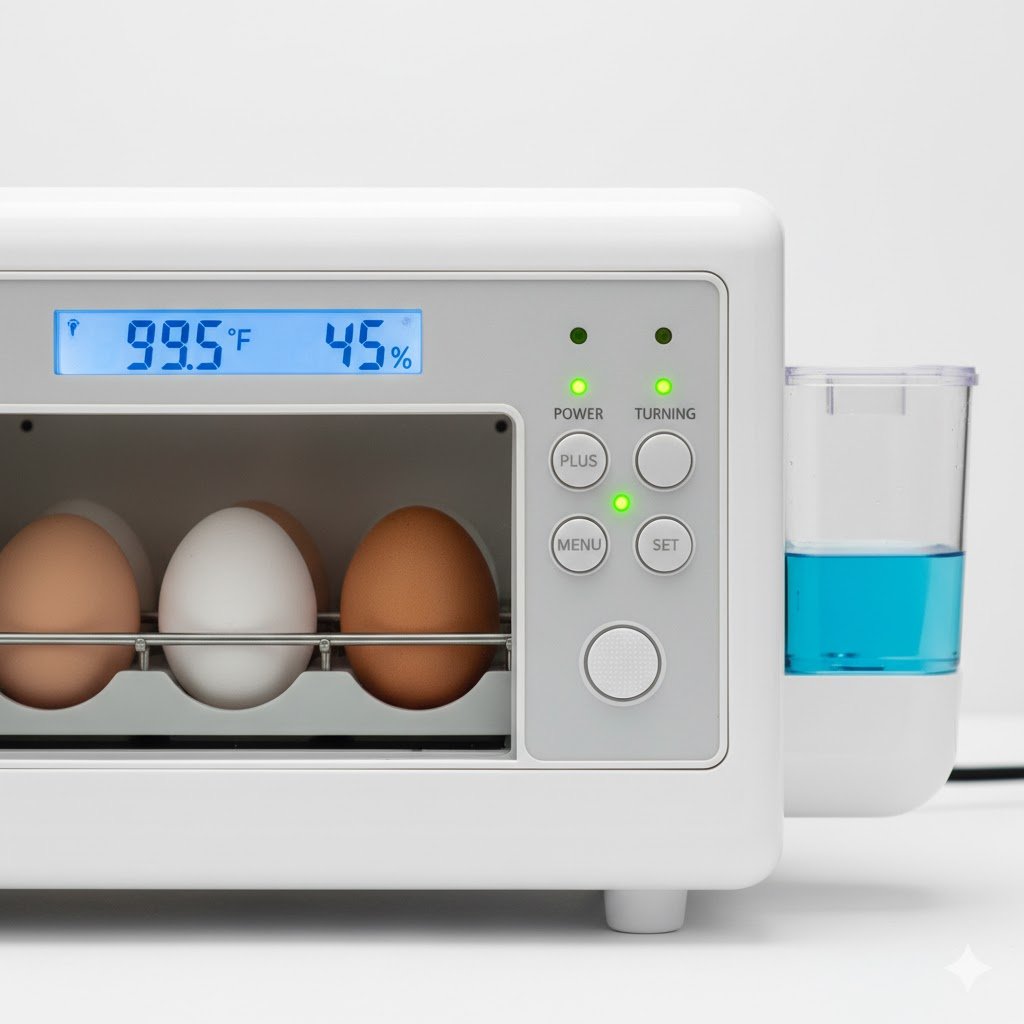
The Brinsea Ovation 28 EX is the top-of-the-line for home incubation. At $469.99 for 28-egg capacity, it costs 2.6 times more than the Nurture Right 360. The Ovation series, which comes in 28-egg and 56-egg sizes, has three automation levels: Eco (basic digital controls), Advance (adds a humidity display), and the EX (which adds fully automatic humidity).
What do you get with the EX? Fully automatic humidity control, temperature accuracy within 0.1°F, and Brinsea’s special airflow system that stops hot spots. Users report successfully running this incubator while on international vacations—it’s the ultimate “set it and forget it” machine for home incubator reliability.
App-Controlled Models (2025 Latest Technology)
Brinsea now offers Connect models with Wi-Fi app control for both the Maxi 24 EX Connect and Ovation 56 EX Connect. The free Brinsea Connect app allows you to monitor and adjust temperature, humidity, and turning from your smartphone using your local Wi-Fi network. The incubator continues functioning normally if internet connection is lost, making this a convenience feature rather than a requirement.
Special Use Cases for Your Flock
Turkey & Waterfowl Eggs
What is the best incubator for hatching turkey eggs? Turkey eggs need 28 days (not 21) and higher, more consistent humidity (55-60%).
The Brinsea Ovation 28 EX is the clear winner here. Its automatic humidity control can easily hold the 60% humidity turkey eggs need. The Nurture Right 360 can hatch them, but you will be adding water constantly. Brinsea’s adjustable egg trays also fit the larger turkey egg size better. Additionally, user reviews indicate the Nurture Right 360’s turner may struggle with heavier eggs like large duck or turkey eggs, occasionally causing eggs to rattle during rotation.
Multiple Hatches & Biosecurity
If you plan to run continuous hatches (starting new eggs while others are hatching), biosecurity is key. Brinsea’s antimicrobial plastics and easy-to-remove parts let you clean and sanitize everything between hatches. This reduces the risk of disease. The Nurture Right is harder to deep-clean. Regular health checks help you identify problems early—learn how to perform a complete chicken health assessment.
Climate Considerations in the USA
Your location matters.
- Hot, Humid South (Florida, Texas): In the summer, my garage gets humid. The Brinsea’s automatic control is smart enough to stop adding water. A manual incubator can easily get too humid.
- Cold North (Minnesota, Maine): In the winter, a cold room can challenge an incubator. Brinsea’s superior insulation and powerful heater keep the temperature perfect. The Nurture Right works best in a stable, indoor room temperature (65-75°F). If you’re hatching chicks in fall or winter, you’ll need a properly winterized coop ready before they’re old enough to go outside. Once your chicks are ready for the coop, make sure you’ve predator-proofed the space properly.
Before investing in hatching equipment, verify your local chicken laws to ensure you can legally keep the birds you hatch.
Classroom & Educational Use
Many teachers use these incubators for classroom hatching projects. The Nurture Right’s 360-degree visibility makes it exceptional for student observation, while Brinsea’s precision teaches scientific methodology.
Decision Time: Which One Should You Buy?
Here’s the truth nobody talks about in those glossy reviews.
Choose the Nurture Right 360 If You:
- Have a budget under $200.
- Want the most eggs hatched for the lowest price.
- Plan on occasional hatches (2-3 times per year).
- Are home and can check the incubator daily for water refills.
- Want the 360-degree view for teaching kids.
- Are hatching common chicken breeds. Not sure which breeds are best for beginners? Our guide to the easiest chicken breeds will help you choose the right hatching eggs.
Choose a Brinsea (Maxi 24 or Ovation EX) If You:
- Can invest $300 – $500 for top-tier reliability.
- Are hatching rare, expensive, or heritage breed eggs.
- Need “set it and forget it” automation (choose an EX series model).
- Want an energy-efficient incubator for long-term use.
- Plan on frequent or continuous hatching.
- Are hatching finicky species like turkeys, ducks, or quail.
- Value UK manufacturing and a 3-year warranty.
- Cannot be home to monitor the incubator every day.
The Middle Ground: Many experienced backyard chicken keepers I know own both. For many, deciding whether to hatch eggs or buy started birds comes down to cost and time. They use a Nurture Right 360 for bulk hatches of common breeds and a Brinsea for their high-value, rare-breed eggs.
Frequently Asked Questions (FAQ)
Q: Which incubator is the best overall?
There’s no single “best” one—it depends on your needs.
Best Value: The Nurture Right 360 (retails around $180, with sales).
Best Reliability/Automation: The Brinsea Ovation 28 EX ($469.99).
Best for Small, Valuable Batches: The Brinsea Mini II series.
Q: Where are Brinsea incubators manufactured?
All Brinsea incubators are manufactured in Weston-super-Mare, North Somerset, United Kingdom, at their factory established in 1976. Brinsea’s UK website shows their manufacturing address at 32-33 Buckingham Road, Weston Industrial Estate, Weston-super-Mare, BS24 9BG, where all products have been 100% UK manufactured since 1976 with no outsourcing to China. Brinsea does not manufacture any products in China.
Q: Do cheap incubators work?
Yes, affordable incubators like the Nurture Right 360 (around $180) work reliably when used correctly. The key is to avoid no-name brands under $50 that lack proper temperature control. Budget incubators from good brands work well but need more manual monitoring.
Q. What is the most successful incubator?
Based on documented hatch rates, the Brinsea Ovation 28 EX achieves the highest consistent success rates at 90-93% for fertile eggs. But “success” depends more on proper usage than the brand. A $180 Nurture Right operated correctly will beat a $470 Brinsea that’s set up wrong. According to Dr. Tom Smith, Jr., extension poultry science specialist at Mississippi State University, proper temperature control is the primary factor in hatch success—high incubation temperatures cause early hatching with bloody navels, while low temperatures cause late or non-uniform hatching.
Q: How much electricity does a Brinsea use?
Brinsea incubators are extremely energy-efficient. The Ovation 28 EX uses about 25 watts. For a full 21-day hatch, a Brinsea Ovation costs about $1.26 in electricity (at $0.10/kWh). The Nurture Right 360 (62 watts) costs about $3.14 for the same time.
Q: What is the best incubator for hatching turkey eggs?
The Brinsea Ovation 28 EX is the best choice for turkey eggs. This is because:
Turkey eggs need 28 days (7 days longer than chickens).
They need a steady 55-60% humidity, which Brinsea’s automatic control handles perfectly.
The adjustable egg trays fit larger turkey eggs.
Q: Can I use these incubators for duck or quail eggs?
Yes, both brands work. Duck eggs need 28 days and even higher humidity (55-60%). Quail eggs need only 17-18 days. Brinsea’s adjustable settings handle these variations much better, while the Nurture Right requires more manual work.
Q: Which has better customer support?
Brinsea’s customer service has excellent reviews, backed by their 3-year warranty (when registered) and USA-based support team. Nurture Right, made by Manna Pro, offers standard support but with a shorter warranty.
Post-Hatch Chick Care Essentials
No matter which incubator you choose, newly hatched chicks need immediate attention. One of the most common issues in the first week is pasty butt, which requires quick treatment to prevent complications. It’s always a good idea to have a chicken first aid kit ready before your eggs hatch.
Once your eggs hatch successfully, you’ll need to prepare for the chicks’ arrival. Make sure you have everything ready by reviewing our complete bringing chicks home checklist.

Oladepo Babatunde is the founder of ChickenStarter.com. He is a backyard chicken keeper and educator who specializes in helping beginners raise healthy flocks, particularly in warm climates. His expertise comes from years of hands-on experience building coops, treating common chicken ailments, and solving flock management issues. His own happy hens are a testament to his methods, laying 25-30 eggs weekly.
